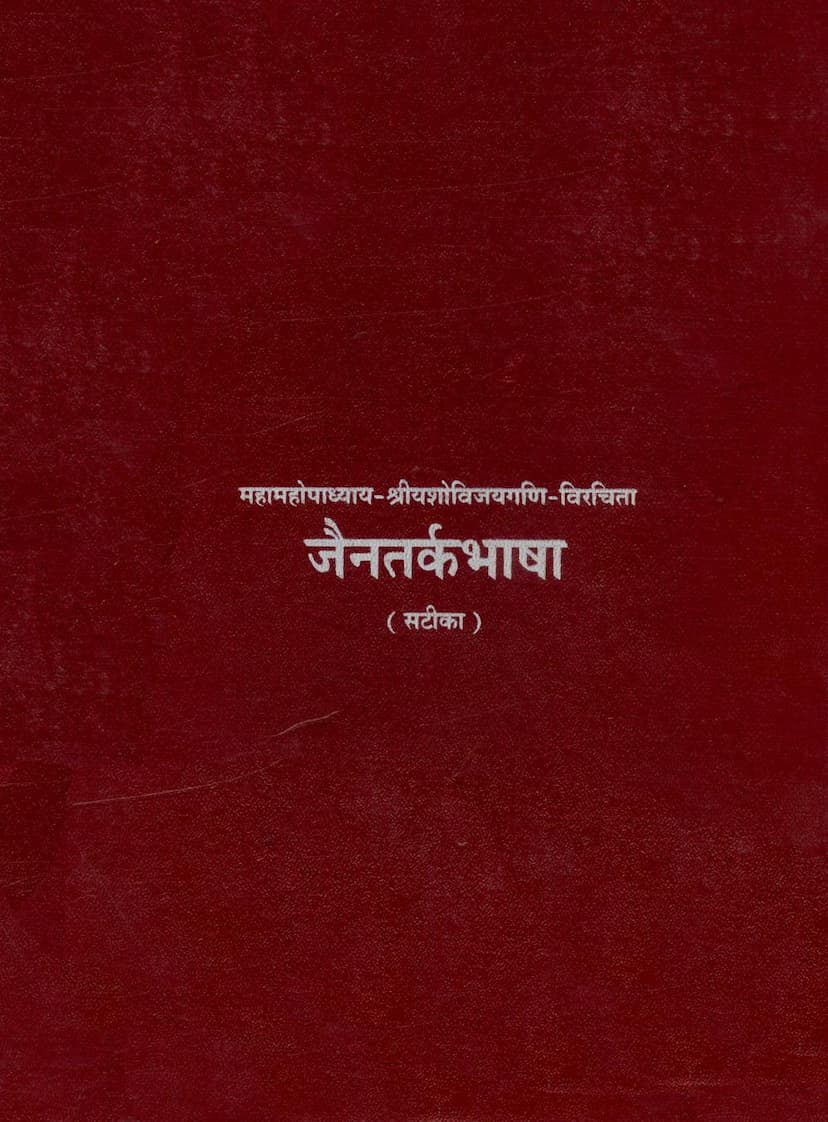Jain Tark Bhasha
Added to library: September 2, 2025

Summary
The Jain Tarkasangraha, authored by Mahamahopadhyay Shri Yashovijaya Gani, is a fundamental text in Jain logic and epistemology (Pramana Shastra). Published by Shri Jain Granth Prakashan Samiti, Khambhat, and compiled by Muni Trailokyamandanvijay, it serves as an introductory primer to Jain philosophical reasoning. The text is renowned for its concise yet profound style, where every word carries significant weight and deep meaning, often requiring extensive study of authoritative texts and commentaries to fully grasp.
The book features two prominent commentaries: Ratnaprabha by Acharya Shri Vijayodayasurishwarji and Tatparyasangraha by Pandit Shri Sukhlalji Sanghavi. These commentaries are crucial for understanding the nuances of Yashovijaya Gani's work, which adheres to the principles of Navya Nyaya, a sophisticated school of Indian logic.
Key Themes and Structure:
The Jain Tarkasangraha primarily focuses on the third category of Jain philosophical discourse: Pramana (Means of Knowledge). It argues for the significance of Pramana in understanding the cosmos and the path to liberation, as all knowledge and spiritual progress are contingent upon it.
Content Highlights:
-
Pramana (Means of Knowledge):
- Definition: The text defines Pramana as knowledge that is self-validating and also leads to the understanding of external reality.
- Classification: It elaborates on the two primary sources of knowledge in Jainism:
- Pratyaksha (Direct Perception): Divided into Samvyavaharika Pratyaksha (Conventional Direct Perception) which is indirect and dependent on sense organs, and Paramarthika Pratyaksha (Absolute Direct Perception) which is the direct, pure knowledge of the soul itself, exemplified by Avadhi, Manahparyaya, and Kevala Jnana (omniscience).
- Paroksha (Indirect Knowledge): This includes knowledge derived through senses and mind, further categorized into Smriti (Memory), Pratyabhijna (Recognition), Tark (Reasoning), Anumana (Inference), and Agama (Testimony of the Tirthankaras and enlightened beings).
- Detailed Analysis: The text delves into the specifics of each Pramana, critically examining the views of other philosophical schools like Buddhism, Nyaya, Mimamsa, and Sankhya, often refuting them and establishing the Jain perspective. It meticulously analyzes concepts like the nature of knowledge, the role of the senses, the validity of inference based on causality and correlation, and the authority of scriptural testimony.
-
Naya (Standpoints):
- Definition: Naya are partial standpoints or perspectives that help understand the multifaceted nature of reality. Each Naya grasms a particular aspect of reality without denying others.
- Classification: Nayas are broadly divided into:
- Dravyarhtika Naya (Substantial Standpoint): Focuses on the substance or essence of things, considering the underlying reality that persists through changes. It is further divided into Naigama, Sangraha, and Vyavahara Nayas.
- Paryayarhtika Naya (Particular Standpoint): Focuses on the specific qualities, modifications, and states of things. It is divided into Rjusutra, Shabda, Samabhirudha, and Evambhuta Nayas.
- Reconciliation: The text explains how these different Nayas, despite their apparent contradictions, are complementary and contribute to a comprehensive understanding of reality when viewed through the lens of Anekanta Vada (non-absolutism).
-
Nikshepa (Categories of Exposition):
- Definition: Nikshepa are categories used for the correct exposition and understanding of reality, particularly when discussing scriptural concepts or terms.
- Types: The text details the four Nikshepas:
- Nama Nikshepa: The category of naming, where a term is applied based on convention or potential, even if the object itself is absent or different (e.g., calling a boy 'Indra').
- Sthapana Nikshepa: The category of representation or symbolization, where an object is represented through an image, idol, or symbol, even if the actual object is absent.
- Dravya Nikshepa: The category of substance, referring to the underlying reality or potential, which may not be manifest in the current state but exists as a cause or potential (e.g., a future embodied soul as 'Deva').
- Bhava Nikshepa: The category of current state or manifest reality, referring to the actual existing quality or state of being.
-
Tarka (Reasoning):
- The book also extensively discusses Tarka, not as an independent Pramana, but as a crucial tool for understanding the validity of Pramanas, resolving doubts, and establishing the logical coherence of doctrines. Tarka is presented as a method of reasoning that explores hypothetical scenarios (Avastha Vyavastha) and the principle of non-contradiction.
Commentaries:
- Ratnaprabha: Highly praised for its clarity and depth, adhering to the Navya Nyaya tradition, it makes the complex concepts of the original text accessible to scholars. It is noted for its insightful analysis and its connection to the scholarly lineage of the Tapa Gaccha.
- Tatparyasangraha: Compiled by Pandit Sukhlalji, this commentary provides textual references from various Jain scriptures to elucidate the Tarka Bhasha's core ideas. It also includes critical reflections on certain interpretations, offering a scholarly dialogue on complex points.
Significance:
Mahamahopadhyay Yashovijaya Gani's Jain Tarkasangraha, with its rich commentaries, is a vital text for anyone seeking to understand the sophisticated philosophical and logical framework of Jainism. It bridges ancient Jain wisdom with the rigorous analytical methods of Indian logic, making it an indispensable resource for students and scholars of Indian philosophy. The detailed table of contents and appendices within the published edition further highlight the text's systematic approach to presenting these profound subjects.